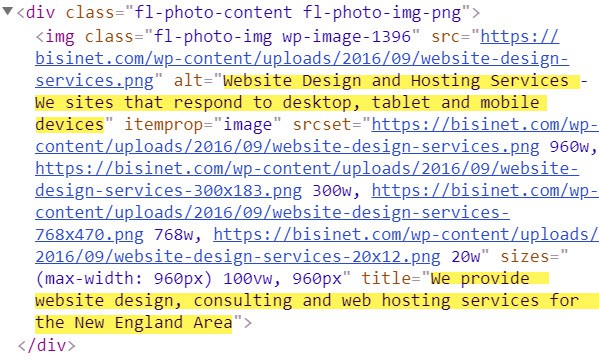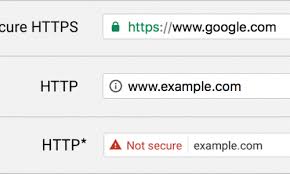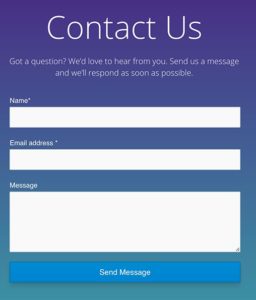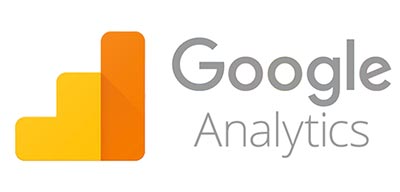Is your website ready for business?
John M. Haddad
A few days ago, I had the pleasure of presenting to small business owners at the Medway Business Council. The topic was on Website Design: Is your website ready for business?.
I wanted to share with you some of the key messages I presented to the business owners as well as some tips and tricks for you to use, whether you do your own business website or hire a website designer.
What are your goals?
Before you spend any money on your website, be sure to define a clear purpose and understand what the goals of your website are. For example, do you want your website to be:
Web design trends in the past 10 years

If your website is over 7 years years old, changes are that it needs a facelift. Much has changed in technology over the past 10 years that impact your website design.
Computer monitors and screens are getting march larger and higher resolution. The explosion of mobile devices such as mobile phones and tablets have taken off. With higher speed internet, more graphics are being displayed vs. the old text-based websites. Growth of embedded video has been quickly increasing
The growth of do-it-yourself website software, such as Wix, Squarespace, Shopify, Weebly, GoDaddy and more, have made it much easier for business owners to quickly create their own website. Most are simple drag and drop templates that allow you to quickly get your business on the web. While there is some technical knowledge required, they can get you a nice looking site. Be careful as many of these, like Shopify, have a low base rate, but they quickly can get complicated and expensive as more “add ons” are needed to do a lot of basic tasks.
However, there is much to be considered beyond just dragging in images and entering text. We will discuss some of these below.
Content is King!
Your website can be as simple as one page or many pages. A standard website should have a home page, about us page to talk about who you are, a contact page with a contact form, phone, address, map, etc. and a page or pages describing your products and services.

Before you start, make sure you have all your content and images ready. When writing text, keep it simple and high level. No one is going to read a novel. Get your key message(s) across on the initial screen (meaning the first screen the customer will see when the page is loaded). People typically do not want to scroll to find out if what they want is on that page.
Use images to break up your text and make it easier to read. Images are much more appealing that just reading text. Use embedded video on your page. People love watching videos. Use video to personalize your business, perhaps showing people at your business or product overviews or “how to’s”. Keep your content fresh by updating it regularly.
All of these things will be key to both your customer and Google for ranking your site. The more key words you have embedded in your text and image, the more it helps Google rank your site for searches.
Design
With higher resolution monitors, it’s tempting to cram in as much text and images across the entire width of the screen. However, it’s much more effective to use “white space” selectively on your sites. This means showing space on the left and right margins as well as space around your text and images so the screen is easier to read.
In addition, keep your fonts simple. Sans Serif fonts are easier to read for a lot of text. Serif fonts can be used for headings or callouts of text. Use a minimum of 16px font size or higher. Again, high-resolution monitors and mobile devices will show text very small if you use smaller font sizes.

Use the “F Pattern” of design. When we read pages, it will typically be top to bottom and left to right. Don’t put important information in the right column, such as navigation bars, as they will typically not be apparent to the customer reading the site. Using the “F Pattern” of design along with larger fonts and whitespace will greatly approve the readability of your site.

And finally, make sure there is a clear “call to action” on your site, preferably right on the initial screen. A call to action is something that you are telling your customer to do, such as “Learn More”, “Buy Now”, “Request Info”, “Contact Us”. These are typically larger buttons that the customer would click and take them to the appropriate page. Use these call to actions buttons liberally on your site to remind your customer to take action.
Images
Images draw attention to your site and break up the text. Using slideshows are good to convey multiple images, but limit them to no more than 2-3 images. People do not have the patience to sit and watch all the images.
Images can also contain text (using image tags) for Google SEO and for ADA, or American Disabilities Act, compliance (screen readers). Look below to see what a user sees vs. what Google and screen readers see.
What the user sees

What Google and screen readers see

With images on websites, size does matter. Today’s mobile devices and cameras take very high-resolution photos. Websites do not need high-quality images. Your images will need to be resized and optimized, or compressed in order to impact the load time of your web page and increase your ranking with Google.
Doing business in a mobile world
Mobile and tablet access to your websites are now at a point where over half the access to web pages worldwide is 52%.

Your website must “respond” to all device –known as “Responsive Web Design. Business user access may favor desktop browsers, but consumers will access your website more with mobile devices.
Be selective in what content gets displayed on a mobile device vs. a desktop device. Not all desktop content needs to be on the mobile. You need to optimize your mobile display to ensure it is loading as quickly as possible. Also, keep in mind that your users will not want to scroll on their device for long periods of time just to read all the content.
Security – protecting your website
Needless to say, the most important part of security is protecting admin access to your website. If a hacker has access to your site, they can create havoc on your site or completely take it down. Security software must be implemented on your site as well as admins having very strong passwords. Even though your site is geared to local access, your site will be attacked globally.
SSL Certificates

In addition, all sites should have a SSL, or Secure Sockets Layer, certificate installed. SSL certificates will put the “lock” indicator on in your web browser and will show https:// instead of http://. SSL gives the user confidence that the data that is being transmitted, be it credit cards or even personal information, will be encrypted. Google also has started to put the words “Not secure” as a warning to users when they visit a website that does not have a SSL certificate. In addition, Google is starting to “penalize” sites in search ratings that are not secure.
E-Mail addresses on webpage

If at all possible, avoid putting your email address on a webpage. You are exposing your email address to the world, and especially spammers. Spammers use “spam bots” to read the code of webpages and lift email address off the site. Even though you may have something like “Email me” on your display, in the background code, your email address is exposed.
In my opinion, you don’t need to advertise your email address. The only people who need your address are those you do business with or are potential clients. It’s best for your website to use a contact form. Contact forms are more professional and ensure that you are getting emails from people who are interested in doing business with you. Contact forms also discourage “spambots” from scanning your code for email address because the email address is not exposed. Your contact form is also a great tool for building email lists for marketing.
Search Engine Optimization (SEO)
Currently, over 92% of searches worldwide are using Google as the search engine, so when we talk SEO, we will be focusing on what Google is looking at for rankings.

There are over 200 factors that Google uses for ranking, but we will only focus on a few that you can immediately impact.
Content, content, content – Your text (including image tags), needs to reflect your key search phrases
Load speed of website – lower ranking for slower sites
Mobile responsive websites (including loading speed)
Image optimization
How often content is refreshed on site (good use of blogs)
Keywords repeated through site, including URL (example: selling fidget spinners, use the term “fidget spinners” throughout site and have URL as https://mycompany.com/fidget-spinners)
What else can you do for SEO?
Ever see the box on the right when you do a search for a business? That box contains information about the business. You can control what is being displayed there. Go to Google My Business (https://www.google.com/business) and complete the information for your business. You will be asked to verify that it is your business, but once you do, you can do the following:
- You can control what is displayed for your business (need to verify it’s your business)
- Add business hours, address, phone and website address
- Allow for reviews
- Question and answers
- Photos of your business and products
- Add multiple locations

In addition, use social media tools like Facebook, Twitter and Instagram posts that reference pages to your website. In other words, “push” them to your site from other sites.
For example, the image on the right shows a facebook post I made my business facebook page that points to a blog post I wrote about security. I also shared it on my personal facebook page.
In addition, make use of subscribe boxes on your websites to get people to sign up for information from you, be it a newsletter or a special you are running.
Finally, there is always paid advertising, such as Google Ad Words and Facebook advertising that businesses can use to help boost their rankings, however, for small businesses, this may be a waste of money unless you really understand the target audience.
Analytics
Finally, you need a way to measure how effective your website is in reaching the right people. One of the best tools, and free tools, to use is Google Analytics.

Google Analytics can give you a wealth of statistics, including demographics of locations people are from, what browser they use, what pages are the accessing the most, how long do they stay on the web page. what device are they using … and so much more. Make sure you have some analytics tool to measure your site.
Summary
We’ve covered a lot a topics very quickly, but the following summarizes things you can do today to help your site load quickly, get higher rankings and be a more pleasant experience for your users.
- Content – clear, concise and reflects the key message for your business – think keywords in search
- Images & Video – Use images and video throughout the site to break up text– optimize and tag for search
- Mobile – ensure your website is mobile responsive – pick and choose what is displayed in mobile vs. desktop
- Performance – make sure your site loads quickly for both desktop and mobile
- Security – move towards https:// – protect your email address
- SEO – follow the basic principles to help Google index and rank your site – Google My Business
- Analytics – use analytics to understand your audience and respond accordingly
View other posts

Share this post
Recent Posts

